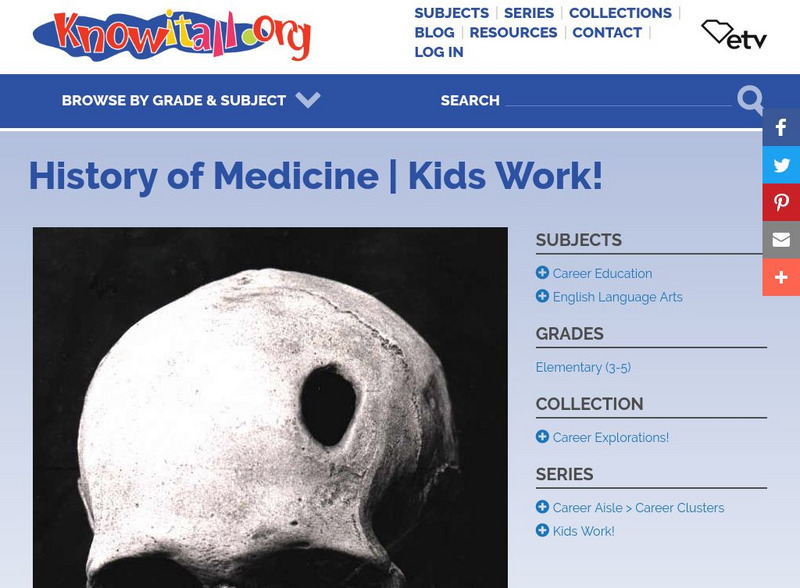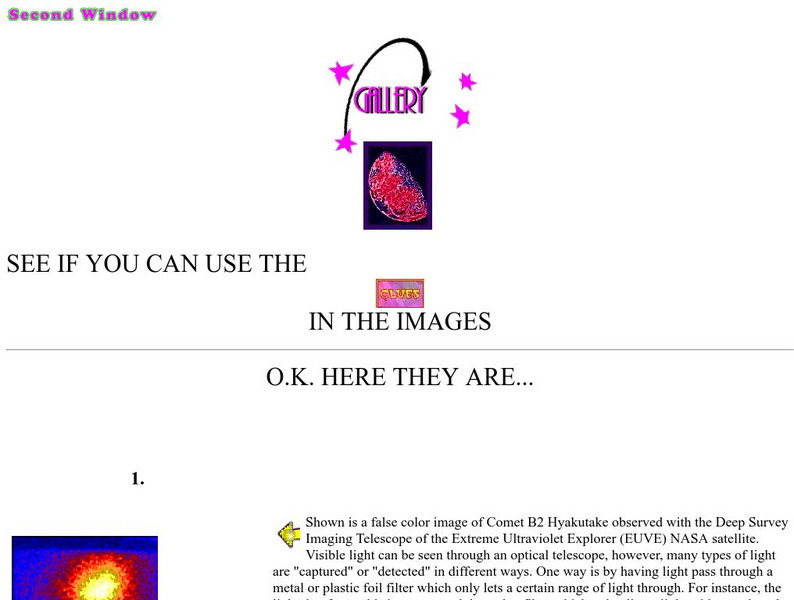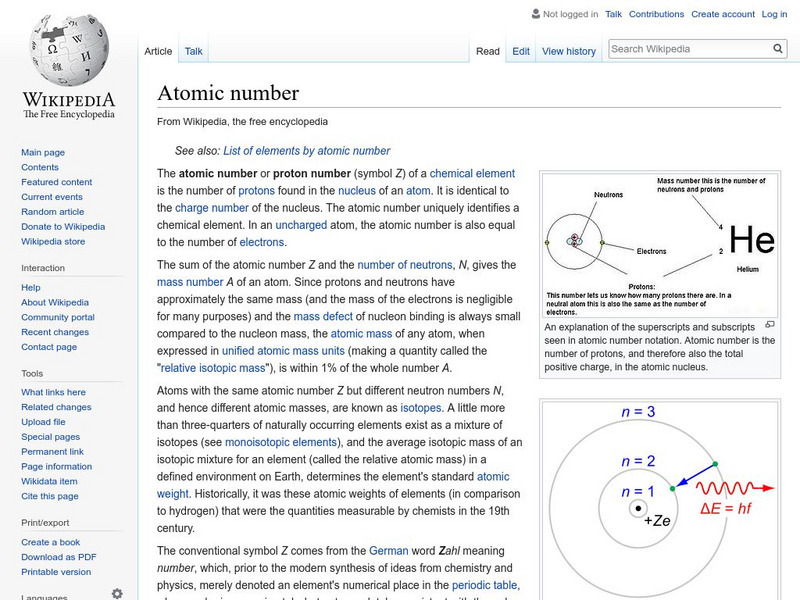TED Talks
Ted: Ted Ed: Is Radiation Dangerous?
Matt Anticole describes the different types of radiation. [5:20]
Massachusetts Institute of Technology
Mit: Invention of the Week: Albert Macovski: Medical Imaging Systems
Learn about the work done by Albert Macovski, which included the development of digital radiography, ultrasound, and magnetic resonance imaging (MRI), and learn how these inventions impact the medical world.
A&E Television
History.com: 7 Groundbreaking Inventions by Latino Innovators
From entertainment devices to lifesaving medical technologies, Latino inventors have advanced humankind through their contributions. Latino inventors have created revolutionary devices that have transformed our everyday world - and often...
NASA
Nasa: Material Analysis
Describes the use of alloys on the space shuttle, and how to analyze alloys using X-ray fluorescence.
California Institute of Technology
Spitzer Science Center: Kepler's Supernova Remnant
This image, titled "Kepler's Supernova Remnant: Views from Chandra, Hubble and Spitzer" features six individual pictures of Kepler's supernova taken with different types of equipment (x-rays, infrared, etc). The text under the image...
NASA
Nasa: Antennae Galaxies
This image, titled "Fire Within the Antennae Galaxies" features three individual pictures of the antennae galaxies taken with different equipment (x-ray, infrared, etc). The text under the image details various specifics about the picture.
PBS
Pbs Learning Media: Science Now! A Picture Is Worth
A video clip asks students to explain how X-ray images communicate information. This is one in a series of creative writing prompts. [0:32]
Curated OER
Web Gallery of Art: The Ray
An image of "The Ray", created by Jean-Baptiste-Simeon Chardin in 1728 (Oil on canvas, 114 x 146 cm).
Curated OER
Web Gallery of Art: The Ray of Sunlight
An image of "The Ray of Sunlight", created by Jacob Isaackszon Van Ruisdael, c. 1660 (Oil on canvas, 83 x 99 cm).
NASA
Nasa: The Space Place: The Land of the Magic Windows
This is a site from NASA that contains an interesting and fun way to learn about the electromagnetic spectrum. Kate receives a strange riddle from her grandfather. Find out what it says and go through the gateway to the Land of the Magic...
US Department of Labor
Bureau of Labor Statistics: Medical Records and Health Information Tech
Career trends and employment projections are detailed in this Department of Labor site. General information on the Medical Records and Health Information Technician profession is also provided.
South Carolina Educational Television
Etv: Kids Work! History of Medicine
A brief history of medicine told in five snapshots of time: ancient times, the Middle Ages, the Renaissance, the early modern period (eighteenth and nineteenth centuries), and modern times.
University of California
Center for Science Education: Gallery
A gallery of astronomy images which depict galaxies, comets, the moon, planets, nebulae, supernovae as seen in various regions of the electromagnetic spectrum. Each image in the gallery is described. Fascinating!
NASA
Nasa: Imagine the Universe: Welcome to the World of Multiwavelength Astronomy!
This Imagine the Universe site provides an introduction into the multiwavelength universe and astronomy. Site provides graphics, links to a quiz, facts on this topic as well as teacher resources.
University of Colorado
University of Colorado: Physics 2000: Cat Scans
A CAT Scan is compared to cutting up a fruitcake on this basic, yet interesting site. This description of CAT Scans is intended for a younger audience and also offers links to the visible human project.
Other
American Mathematical Society: The Mathematical Cat Scan
Diagrams and discussion of the "collection of 1-dimensional records" that make up a CAT scan.
Wikimedia
Wikipedia: Atomic Number
Wikipedia provides the definition of the term, "Atomic number," a term used in chemistry and physics to represent the number of protons in the nucleus of an atom.
Chemicool
Chemicool: Barium
A very easy to follow site from Chemicool with all sorts of clearly presented data on barium. Not flashy, but thorough and clear,
Chemicool
Chemicool: Beryllium
A very thorough and well organized site from Chemicool describing lots of useful and relevant information on beryllium. Should be very valuable to students at many levels.
York University
Yes I Can! Science: Red Rover, Red Rover
The YES I Can! Science site based out of York University in Toronto is featuring the Mars rovers. The site has all the mission background information teachers need all in one place as well as several great student activities, (Build a...
Mocomi & Anibrain Digital Technologies
Mocomi: Nikola Tesla Biography
Interesting biographical information, fun facts, and famous quotes about Nikola Tesla known for his work with alternating current.
Curated OER
Educational Technology Clearinghouse: Clip Art Etc: Wilhelm Rontgen
(1845-1923) German scientist she produced and detected electromagnetic radiation in a wavelength range today knob as X-rays or Rontgen rays, an achievement that earned him the first Nobel Prize in Physics in 1901.
Curated OER
Educational Technology Clearinghouse: Clip Art Etc: William Roentgen
A German physicist, of the University of Wurzburg, who, on Nov. 8, 1895, produced and detected electromagnetic radiation in a wavelength range today known as x-rays or Rontgen Rays.
Other popular searches
- Animal X Rays Preschool
- Animal X Rays
- X Rays Mri Bones
- Preschool Lessons X Rays
- X Rays Art Preschool
- Understanding X Rays
- Bones and X Rays
- X Rays and Scans
- X Rays Preschool
- X Rays Tech
- X Rays Tech Schools
- Radiation and X Rays












